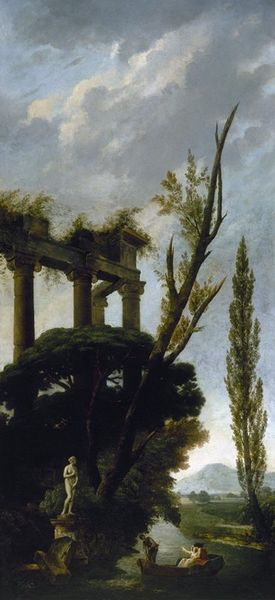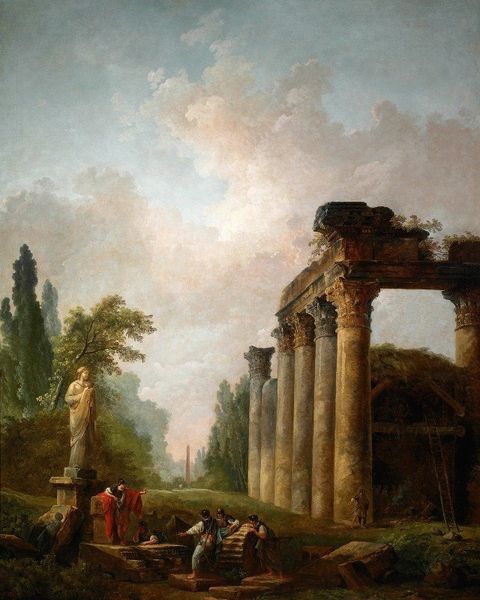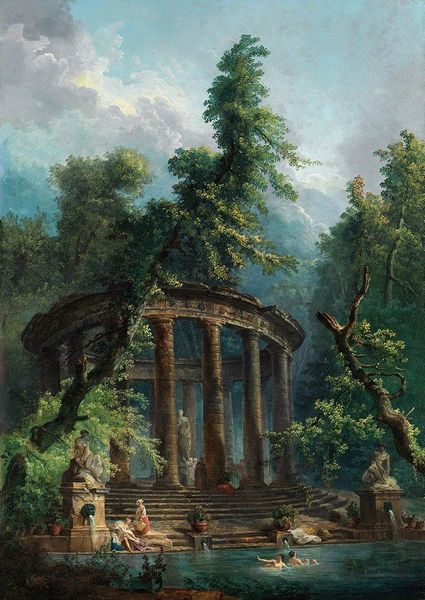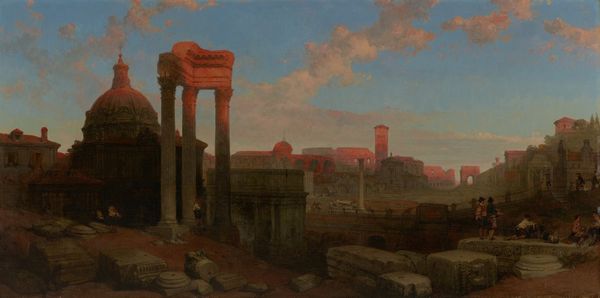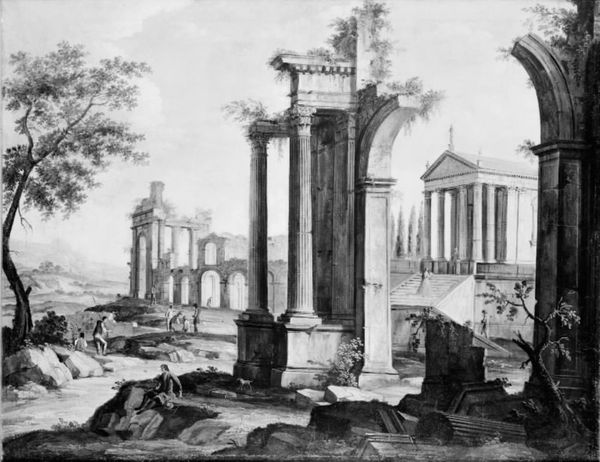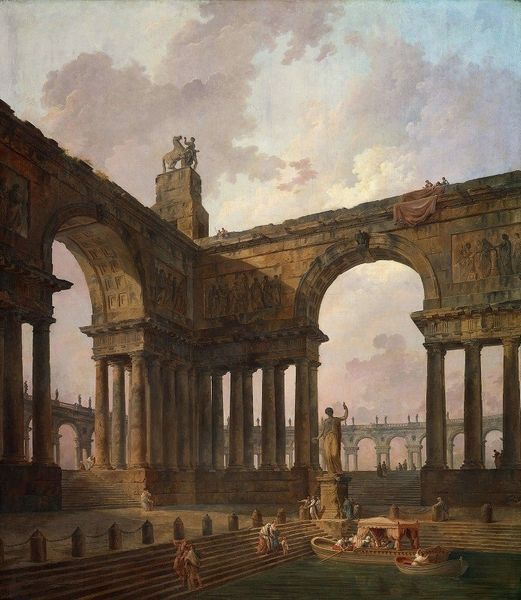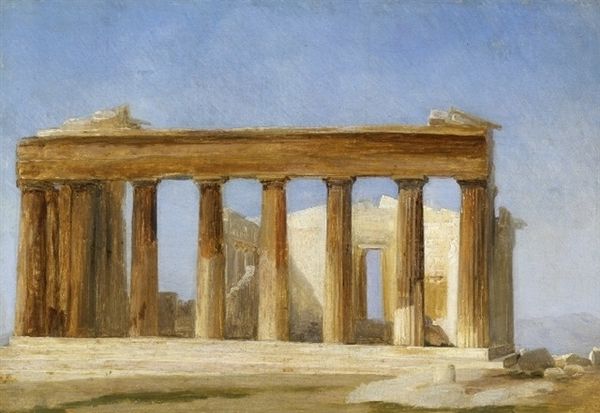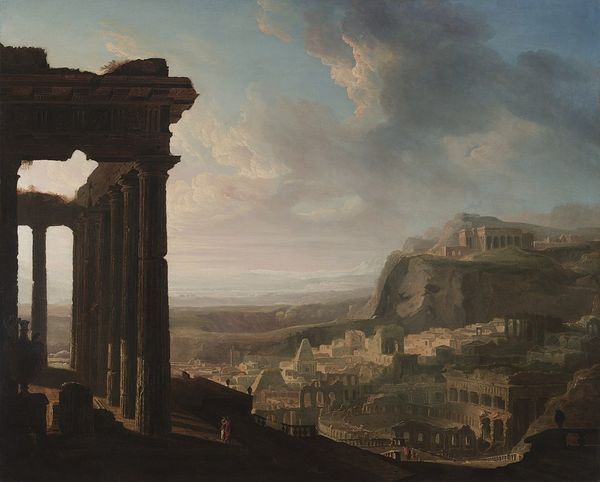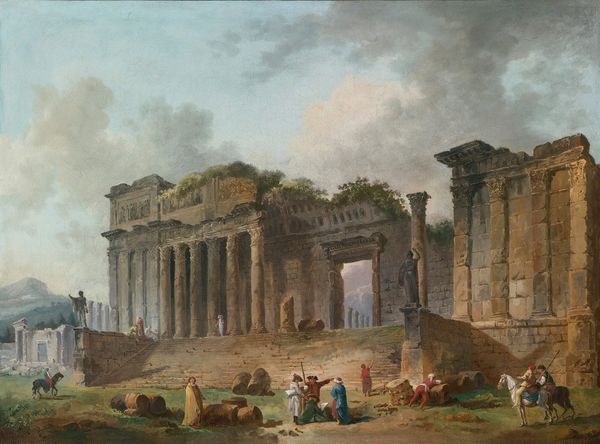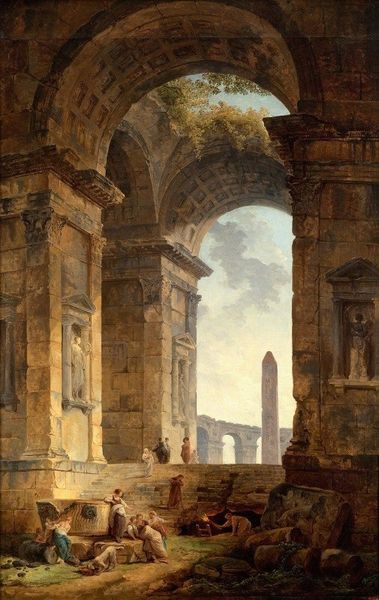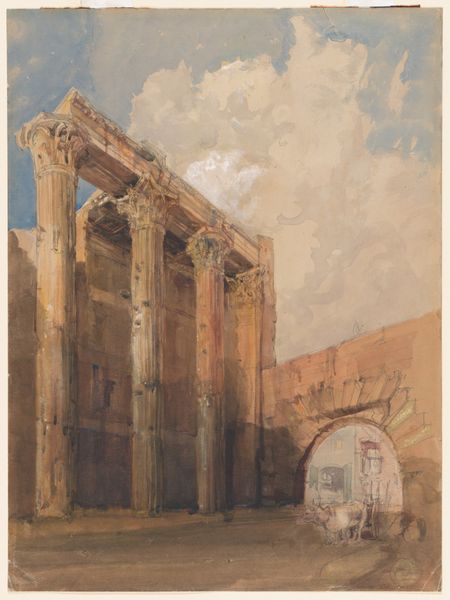
Architectural Capriccio with ruins of the Temple of Saturn and the Colosseum in the background
0:00
0:00
painting, oil-paint
#
allegory
#
painting
#
oil-paint
#
landscape
#
oil painting
#
classicism
#
romanticism
#
cityscape
#
history-painting
Copyright: Public Domain: Artvee
Editor: Here we have Hubert Robert's "Architectural Capriccio with ruins of the Temple of Saturn and the Colosseum in the background," an oil painting. There's a real sense of melancholy to the scene. What strikes you about this piece? Curator: I'm drawn to the very means of its production. Think of the pigments ground by hand, the linen canvas stretched taut, all requiring human labour, not to depict grand historical events, but ruins. Ruins, signifying the collapse of past labour, of past empires. Robert isn’t just painting a pretty picture. Editor: I hadn't considered the labour aspect so directly. I guess I was seeing it more from the perspective of, you know, Romanticism. Curator: And yet, consider the capriccio itself - a constructed fantasy. Robert takes these Roman icons – Temple of Saturn, the Colosseum – and re-stages them in an imaginary landscape. Is he critiquing the nostalgic gaze, revealing how even history becomes a commodity to be consumed and rearranged for aesthetic pleasure? Notice the figures leading livestock in the foreground; the very materials that constructed these temples perhaps came at the expense of those peoples’ hard labour. Editor: That’s fascinating. So you're saying he’s not just presenting these beautiful ruins, but also making us question how they were built, and at whose cost? Curator: Precisely. Look at the decay represented in the stones. It is more than romantic nostalgia. These aren’t pristine marble columns, but roughhewn blocks. It hints at the extraction and refinement of these materials as integral to understanding Rome’s rise and eventual decline. He makes a point by creating the images of these. The painting makes labor central to how it shows value and means. Editor: I’m definitely seeing it in a new light. It’s like the painting is whispering stories of production, consumption and the social impact. Curator: And perhaps that’s the true legacy of these ruins. Their continued presence allows the stories that built them – and destroyed them – to come to light.
Comments
No comments
Be the first to comment and join the conversation on the ultimate creative platform.

